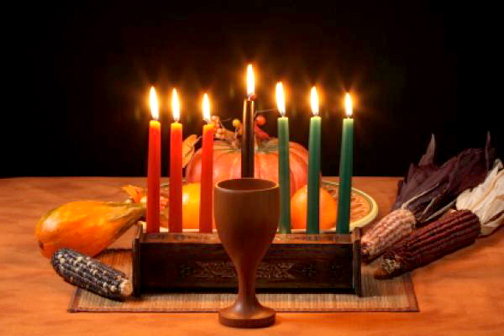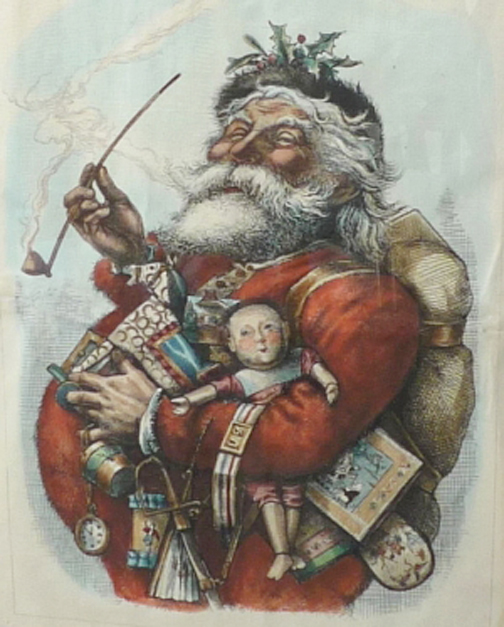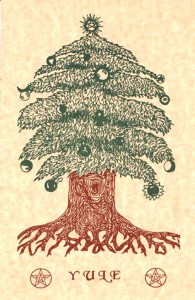
By Charly SHELTON
The end of the year is celebrated in many different cultures. But because each celebration is so all consuming, there is rarely an opportunity to see beyond our own traditions.

Most Americans know the basics of Christmas and Hanukkah, regardless of religious affiliation, but the mysteries of Kwanzaa and Yule for many stretch beyond basic knowledge. CV Weekly has rounded up the essential facts on several winter holidays to inform while supplying fun facts to amuse and impress the family around the winter holiday feast table.

In America and Europe, Christmas is the most celebrated holiday. Starting as a Christian holiday, it has become more secular as the years go by; involving Christianity has become more of a choice than an expected part of the holiday. Christmas, at its core, celebrates the birth of Jesus Christ in a manger in Bethlehem, circa 1 AD, when three wise men – the Magi – found him after following a particularly bright star that led to his birthplace. The iconography of the star hanging over a manger, the baby Christ in the manger and other Christian symbols are associated with the holiday.
The secularization of Christmas began to ramp up in the first half of the 20th century, particularly by soldiers of WWI who romanticized the holiday while serving at the front and away from their families, making it more about the family and togetherness than the Christmas Mass and prayers.

Gifts, Christmas trees and stockings have been enveloped into the secular holiday from other traditions. Santa Claus, the man who delivers gifts to well-behaved children around the world on Christmas Eve, is based on Saint Nicholas, the patron saint of repentant thieves and reformed prostitutes. St. Nick was known to have a violent streak and personally beat heretics in fistfights. As a young man, he was said to sneak into homes and put treats into the socks hung over the fireplace to dry out. In 1881, he was standardized as the American Santa in the red and white suit by Thomas Nast in Harper’s Weekly magazine. This was popularized overseas by Haddon Sundblom, artist for Coca-Cola, who made American Santa the standard around the world.
Hanukkah is celebrated in Judaism as the Festival of Lights. It commemorates the miracle when the Second Temple was reclaimed from Syrian heretics and purified through purity rites. The rites called for the burning of a menorah continuously, but there was only a one-day supply of oil. The miracle was that the oil lasted for eight days until a fresh stock could be found. The holiday is celebrated by lighting the candles of the menorah over eight nights, feasting with foods fried in oil and giving gifts to children each night. (For more, visit CVWeekly.com for a full article on Hanukkah.)

Kwanzaa is a holiday invented in 1966 by Maulana Karenga. Over seven days, from Dec. 26 to Jan. 1, the celebration honors African-American culture and heritage with the lighting of the kinara candles, feasting and gift-giving. The name derives from a Swahili phrase, matunda ya kwanza, meaning “first fruits of the harvest.” It celebrates the harvest time in Africa, the beginning of summer and the feast that would follow to celebrate the time of satiation and plenty, while reinforcing good values of faith, creativity, purpose, cooperative economics, collective work and responsibility, self-determination and unity each day.
Festivus is a modern holiday popularized by the TV show “Seinfeld” in the 1990s, and has since taken on a life of its own. The holiday, known as “Festivus for the rest of us,” is when celebrants reject the abject commercialism of Christmas and the religious traditions of Hanukkah, opting for a completely secular winter holiday. Traditions include the Festivus pole, an undecorated aluminum pole in place of a Christmas tree, the traditional Festivus feast, the Airing of Grievances, the Feats of Strength and declaring mundane coincidences as “Festivus miracles.”
Yule is probably the most influential holiday simply because it is the oldest and, as such, has had the most traditions repurposed into other holidays. Yule is celebrated by modern neopagans, Wiccans and other Earth-worshiping pagans as the celebration of the winter solstice, the day when winter begins and the Northern Hemisphere is farthest away from the sun. This makes it the shortest day of the year. In the forests of Europe, where the celebration of Yule began in what is called The Old Religion, snow blanketed the landscape and everything was frozen and dead. Those plants that survived the winter freeze and stayed green – pine trees, holly and mistletoe – were seen as sacred and life bringing. The druids of Celtic lore used mistletoe as a fertility aid because they saw trees die in the fall and then mistletoe sprouted in the winter, bringing the tree back to life in the spring. So they reasoned that the connection could be applied to human fertility and crop abundance. This was the time of sacrificing gifts to the old gods at the base of these sacred trees, decorating the sacred trees, burning big bonfires and the Yule log so the light would chase away the long, dark nights, and feasting in celebration at the coming of spring because every day after Yule is longer and lighter.
These traditions – including gift giving, Christmas trees, feasting and the lighting of candles to bring light to the world – have been transferred to most every other holiday. Many think it is because it is easier to accept something new if there is something familiar about it. So this Old Religion celebration became a pagan tradition, then a historic religious holiday, and currently a modern, quasi-secular tradition.
